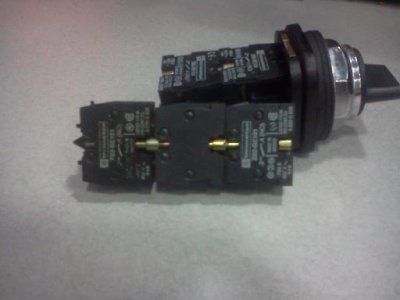I don't see enough contacts or terminals on the switch you have. As Jim said, you need a 3-position switch & all the contacts need to be open in the center position. Probably one of the capacitor leads needs to be open, too, so current doesn't continuously flow through it & one of the motor windings when it should be off. If I could I'd attach a sketch to this reply but I'm using a Linux distro & haven't gotten my printer or scanner to work yet. So, to make things as simple as possible, I'd use a 3-position, 3-pole, double throw [3-position, 3PDT switch with center open] toggle switch with the same voltage rating as the motor uses & 25% higher current rating than the motor requires so it'll last.
With all that said, one power lead [L2] goes to the red motor lead. The first contact needs to switch the deep/dark blue wire between the black & gray motor leads, deep blue & black closed=CCW. The second contact needs to switch the other power lead [L1] to either the black or gray motor leads, L1 & gray closed=CW. The third contact connects power lead, L1, to the cap in either CW or CCW position & open in the center as are the other 2 contacts. I hope this makes sense.

